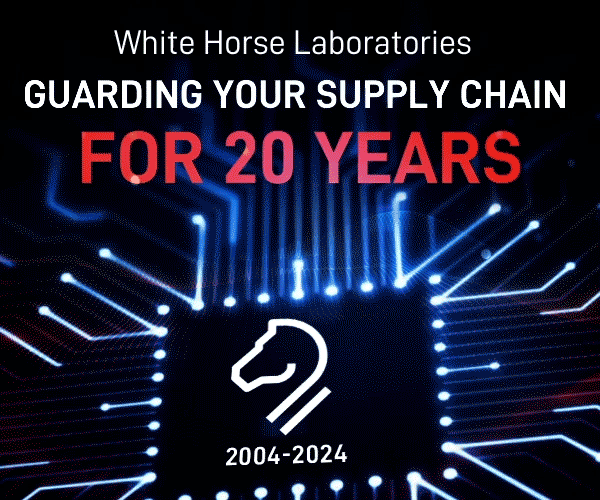Electronics Distributors Leverage the Duty Drawback Advantage to Mitigate China Tariffs
The duty drawback refund program, originally enacted in 1789, underwent a modern renovation that significantly liberalized its rulemaking just in time for the imposition of Section 301 “China Tariffs” beginning in mid-2018. Unfortunately, many importers of electronic components do not fully understand the new drawback regime, and as a result miss opportunities to mitigate a large portion, or in some cases, all of the punitive 25% China tariff.
The modernized version of the drawback regime provides certain industries, particularly electronics distributors, with a unique advantage when compared to other competing tariff mitigation strategies such as foreign trade zones, bonded warehouses, or potentially disruptive shifts in supply chains away from China. This advantage relates to the workings of “substitution” provision of the new drawback regime which gives electronics distributors a powerful tool to counter the grievous impact of the China tariffs on the industry.
The duty drawback law housed in the Tariff Act of 1930 as amended allows for the refund of duties, taxes and fees levied at the time of importation if all or a portion of the imported merchandise is subsequently exported from the United States either in essentially the same condition or following a manufacture process.
The key to understanding the duty drawback advantage lies in the methods used to match imports and exports under this unique tariff mitigation strategy. The most restrictive option available to drawback claimants requires the exact matching of the export to the previous import using serial number or lot number tracing (referred to as the “direct identification” method). The most flexible method allows a company to match “like” products (referred to as the “substitution” method). Naturally, companies file using the substitution method whenever the law allows (notably the NAFTA and its updated version, referred to as the USMCA restricted the substitution option on exports to Canada and Mexico).
The Trade Facilitation and Enforcement Act (referred to as the TFTEA), fully implemented in 2018, significantly liberalized the definition of “like” or substitutable merchandise for drawback purposes. Prior to the new regime, imports and exports needed to share the same specifications or, in the case of electronic components, the same part number to qualify under substitution rules. Now imports and exports need only share the same Harmonized Tariff Schedule Number at the eighth digit (note the full classification number extends to 10 digits in the United States). Essentially, a drawback claimant can match import and export transactions based on a much broader component description while disregarding the specific part number.
Why does this rule benefit the electronic distribution industry disproportionately? Primarily because of the typical business model employed by the industry. Many large electronics distributors use the United States as a global distribution point, and thus export from large quantities of previously imported goods. Additionally, the industry sources components from multiple countries of origin in addition to China. For example, importers of integrated circuits into the United States commonly source distinct material codes with varying functionality from manufacturing plants located in various Asian countries. All the ICs regardless of country of origin fall under the same classification code with a zero-duty rate except for those originating in China that are subject to the 25% Section 301 tariff.
Here is the key takeaway: The substitution provision of the drawback law permits a company to export ICs that originated in Japan, South Korea, or even ICs that were produced in the United States, and then leverage this export activity to receive a refund of the duty paid against the China originating dutiable ICs. Why? Because of the “magic” of HTS level substitution. Depending on the ratio of qualifying exports to China imports, some electronics distributors could receive a refund on 100% of China tariffs paid, as the following example illustrates.

Under the Substitution matching method, the origin of the export does not matter. Consequently, exports originating in Taiwan and Malaysia can be matched against China imports in drawback “claim” that would refund 99% of the $1,400,000 in tariff paid in this example.
Contrasted with a competing strategy of a Foreign Trade Zone (FTZ), the FTZ offers deferral of duty only until goods are entered into the United States for consumption, at which point the China tariff is paid on components destined for domestic sale. Exports from the FTZ of product originating in China are not assessed duty since they do not enter the United States commerce. With an FTZ, direct duty savings is limited to the quantity China-originating goods exported from the zone. Once again, because of the HTS level substitution, drawback utilizes all of a company’s qualifying export activity, not just those of China origin, to offset the tariff China paid – a massive advantage for drawback filers.
Further, the drawback regulations include a retroactivity feature that allows for refunds against the past five years of import/export activity, another huge edge over FTZ’s as zones provide only prospective benefits once fully operational. Finally, drawback programs, unlike the establishment of an FTZ, leave a company’s existing distribution model intact.
That said, the new drawback regime did include some convoluted rulemaking that placed limits on the substitution benefit. These rules place a premium on analytical data-driven decision-making that begins with the initial viability assessment. A company should always conduct a thorough initial program assessment as a proof-of-concept exercise. This evaluation should accurately quantify the amount of potential recovery as well as clearly outline the overall project plan with specific milestones for deliverables, a must to secure executive management buy-in for the program.
Anthony Nogueras, a drawback expert with over 30 years’ experience, founded Alliance Drawback Services in 2001. He is a licensed Customs broker specializing in the assessment, implementation and ongoing management of duty drawback recovery programs. He can be reached at info@alliancechb.com or via phone at 727-290-6476.











